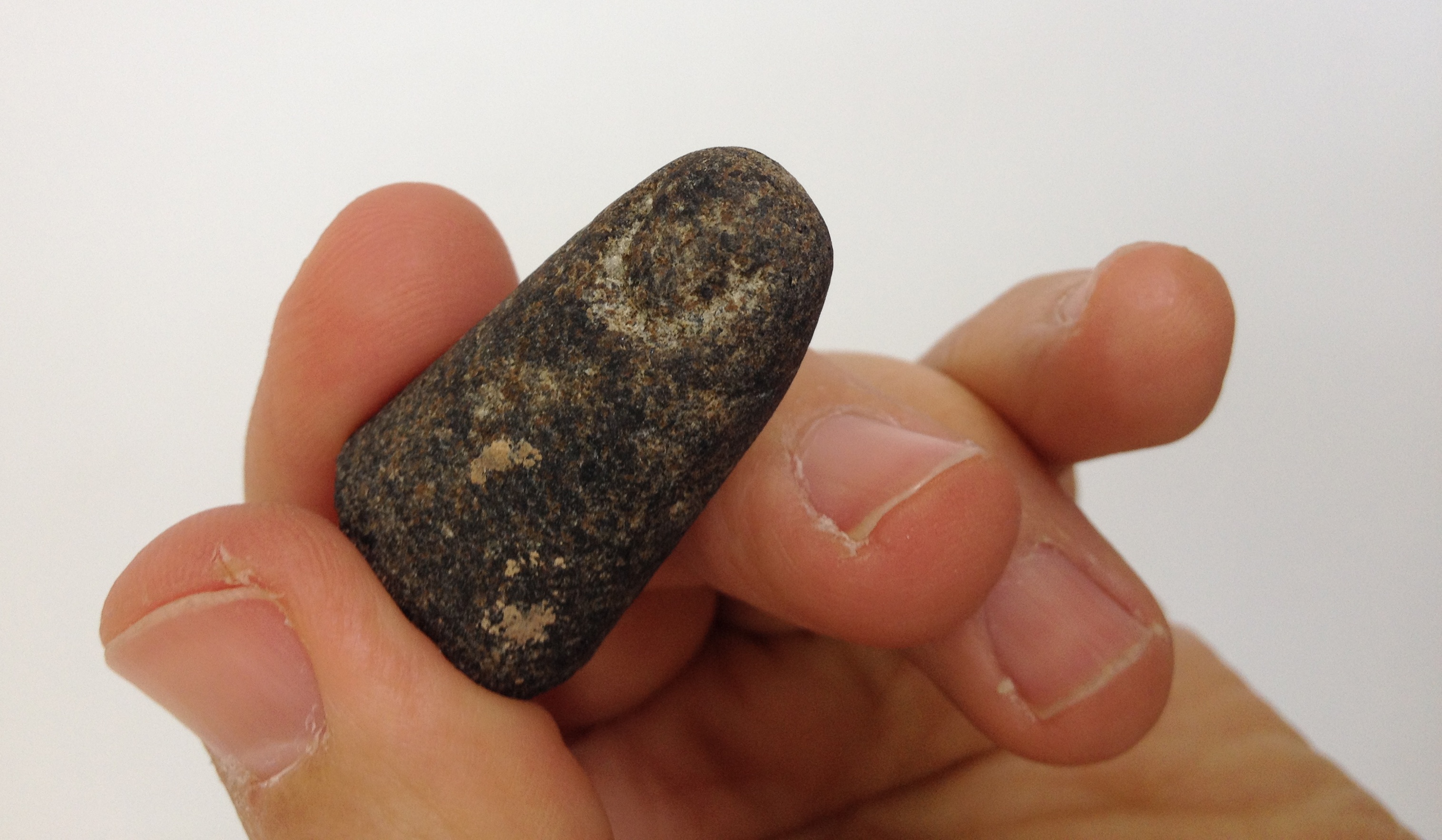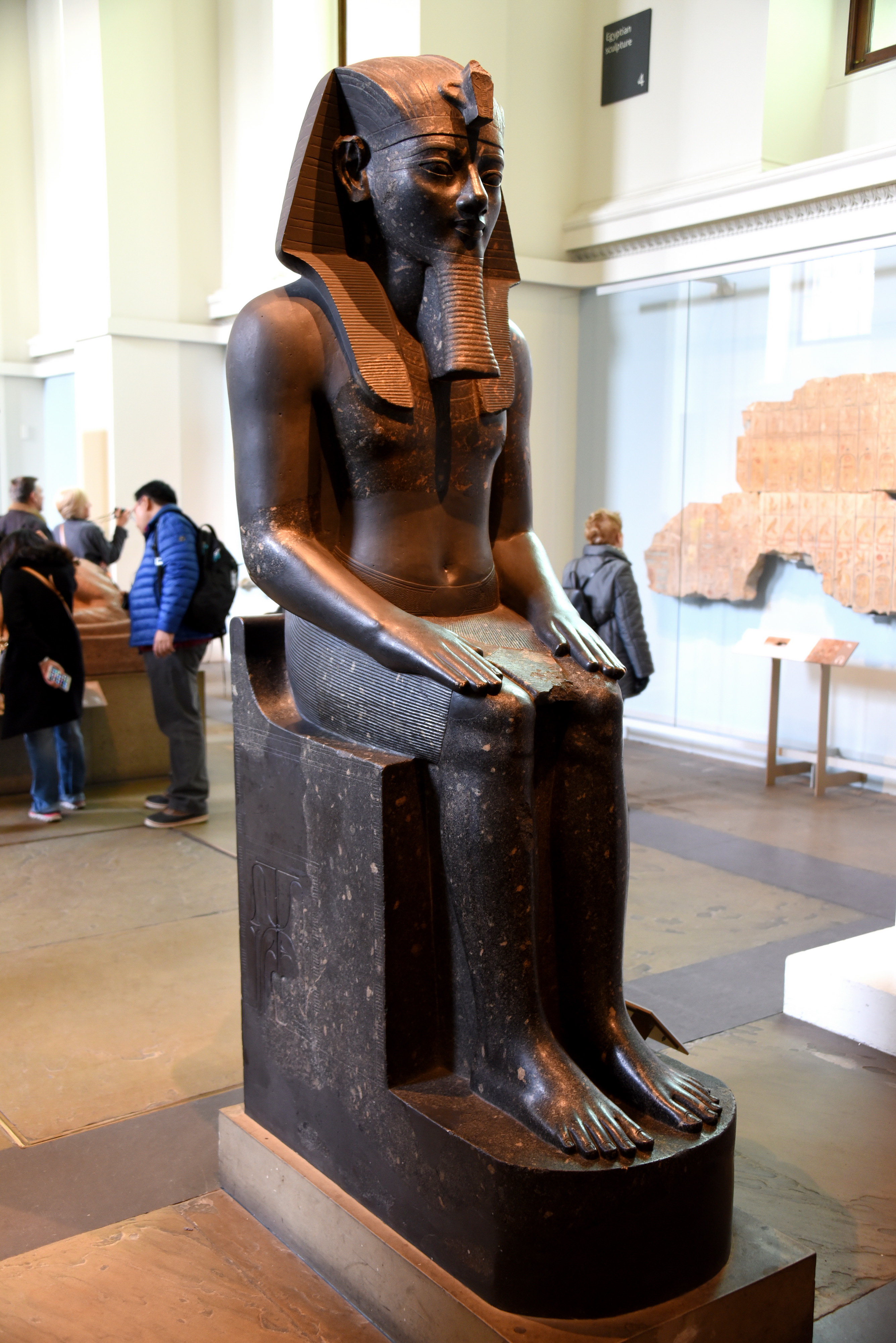Is this Egyptian statue fragment the last artifact to be shared with you?
Has part of an Egyptian Statue been discovered on the Temple Mount?

Fragment of a finger of an Egyptian statue
A finger of a statue has been discovered by the Temple Mount Sifting Project. The finger is currently being examined by the leading experts in the field who have determined that the statue probably originated in Egypt, though there is a need for further in-depth research in order to accurately date it. The Temple Mount Sifting Project, which is struggling to remain open in the face of depleted funds, has recently launched a crowdfunding campaign calling on the public to support the research and publication of the many finds discovered over the years, and secure the project’s future.
The statue fragment was discovered within the soil dumped in the Kidron Valley by the Muslim Waqf in 1999; soil which originated from an illegal excavation which took place on the Temple Mount.

Statue of Egyptian Pharoah, Thutmose III from the British Museum (GoogleImages)
“This is a fragment of a life-size statue, which was made in Egypt and imported to Canaan,” reports Dr. Gabriel Barkay, co-director of the Temple Mount Sifting Project. “We clearly notice that this is part of a pinky finger measuring 3.5 cm, from a man’s hand, which includes also a fingernail. The statue is made of a hard black stone originating in Egypt. The statue most likely represented a figure of a god or king. The black stone from which the statue is manufactured testifies to its Egyptian origin.”
The finger has been examined by archaeologists who specialize in early art from the Land of Israel. Though the identification and dating are not yet certain, according to Dr. Barkay the statue fragment was probably made in the Egyptian art style common during the Late Bronze Age (about 3500 years ago). We cannot exclude the possibility that the statue is from a later period.
The Temple Mount Sifting Project has yielded additional artifacts which were imported from Egypt or manufactured under Egyptian influence. Among them is an additional statue fragment of a man’s shoulder, scarabs (amulets shaped like dung beetles), seal impressions, and Egyptian-style jewelry all dating to the Late Bronze Age.
- Egyptian scarabs found in the Temple Mount soil by the Sifting Project
- Amulet of Thutmose III found in the Temple Mount soil by the Sifting Project
These artifacts join others from this period which were discovered in recent years in the City of David, as well as artifacts which may testify to the existence of an Egyptian Temple in Jerusalem in the area of the St. Etienne Monastery near Damascus Gate, and dated to the 13th century BCE (prior to the date traditionally attributed to the Exodus of Israelites from Egypt).
Ancient Egypt ruled over the Land of Israel during the second half of the 2nd Millennium BCE, the days of the Egyptian New Kingdom and of the 18th, 19th and 20th dynasties. Jerusalem is known to have been a semi-autonomous city-state, located in the Egyptian province of Canaan.
The finger fragment found by the project will be handed over to additional experts who can clarify its date.
Check out our cool video where Dr. Aaron Greener speaks about this Egyptian Finger!
The accurate dating of this artifact is just one example of the many research questions which the Temple Mount Sifting Project is attempting to solve while researching the many finds accumulated during the past 12 years of sifting. Unfortunately, many archaeological excavations fail to publish scientific reports and many important finds are left in the oblivion of the warehouses of University, museum, or government archaeological institutes. Without publication, it is as if these artifacts had never been found. The directors of the Temple Mount Sifting Project are working tirelessly to prevent a similar fate for the hundreds of thousands of artifacts discovered by the project. Publication is crucial due to the archaeological importance and national significance of these artifacts. They are also the cultural heritage of billions of people around the world who have a right to know about them.
The Temple Mount Sifting Project launched a crowdfunding campaign a few days ago in order to recruit wide public support to help the project continue the important work of researching these artifacts. Zachi Dvira, founder and co-director of the project, said that the public has demonstrated how much the historical heritage is dear to them. Half of the full sum needed for funding the annual research was raised within the first three days of the campaign. “We hope that the public – recognizing the great significance of the project – will continue to support us in the future.”
Important note: Last week media reports about Prime Minister Netanyahu’s intervention for resuming the sifting were not accurate. The sifting was not resumed, but a meeting will be scheduled for after the Passover holiday to resolve the crisis in order to resume the sifting. As we mentioned in our first announcement, the main problem we are facing is finding the funding for the research and publication of the many artifacts that we have recovered. The sifting cannot be resumed until this is solved.
Please consider giving to our crowdfunding campaign. We’ve already raised over 168,000 shekel of our goal, but we need your help to go all the way. In this campaign, we get all or nothing, so please help us make sure that this campaign succeeds and we can continue our important research, and share it with you, this year.
Don’t let this be the last bit of research we can complete
and share with you.
Click Here to Donate Now
Discover more from The Temple Mount Sifting Project
Subscribe to get the latest posts sent to your email.














Reblogged this on Kattukse Vrienden voor Israël.